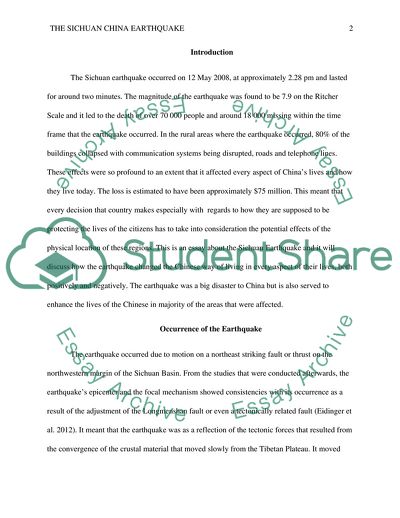Cite this document
(The Sichuan China Earthquake Assignment Example | Topics and Well Written Essays - 3000 words, n.d.)
The Sichuan China Earthquake Assignment Example | Topics and Well Written Essays - 3000 words. https://studentshare.org/environmental-studies/1847658-sichuan-china-earthquake-2008-played-an-important-role-in-contributing-on-peoples-understanding-of-disasters
The Sichuan China Earthquake Assignment Example | Topics and Well Written Essays - 3000 words. https://studentshare.org/environmental-studies/1847658-sichuan-china-earthquake-2008-played-an-important-role-in-contributing-on-peoples-understanding-of-disasters
(The Sichuan China Earthquake Assignment Example | Topics and Well Written Essays - 3000 Words)
The Sichuan China Earthquake Assignment Example | Topics and Well Written Essays - 3000 Words. https://studentshare.org/environmental-studies/1847658-sichuan-china-earthquake-2008-played-an-important-role-in-contributing-on-peoples-understanding-of-disasters.
The Sichuan China Earthquake Assignment Example | Topics and Well Written Essays - 3000 Words. https://studentshare.org/environmental-studies/1847658-sichuan-china-earthquake-2008-played-an-important-role-in-contributing-on-peoples-understanding-of-disasters.
“The Sichuan China Earthquake Assignment Example | Topics and Well Written Essays - 3000 Words”. https://studentshare.org/environmental-studies/1847658-sichuan-china-earthquake-2008-played-an-important-role-in-contributing-on-peoples-understanding-of-disasters.


